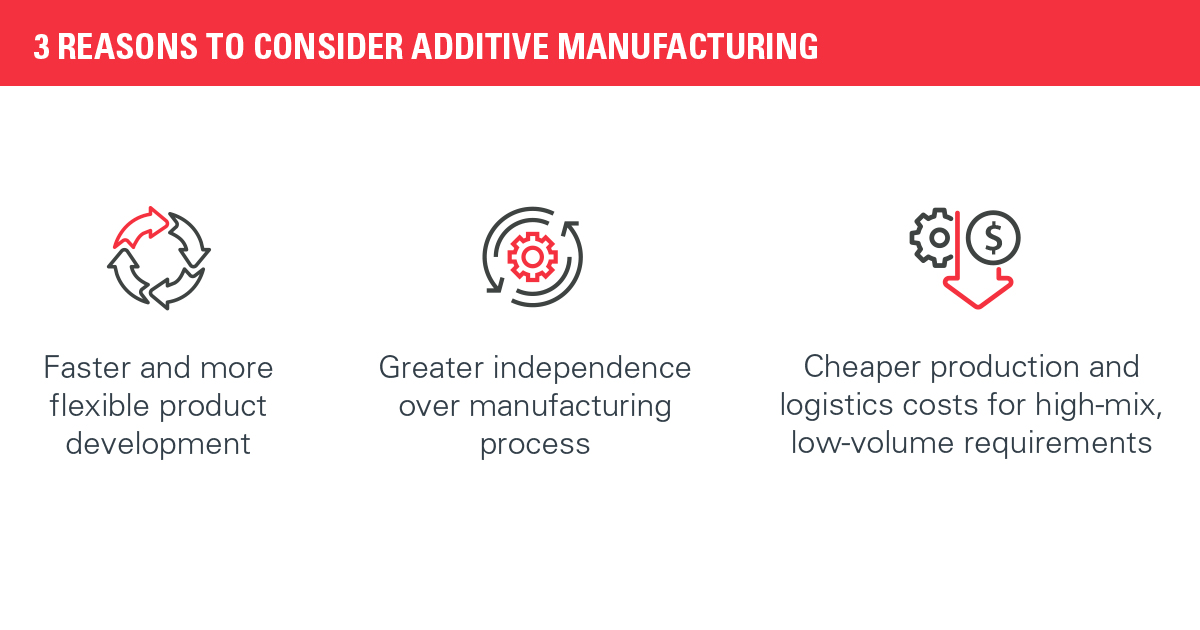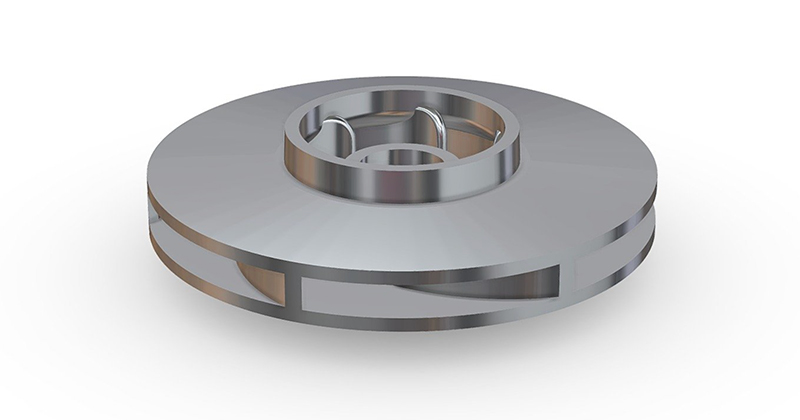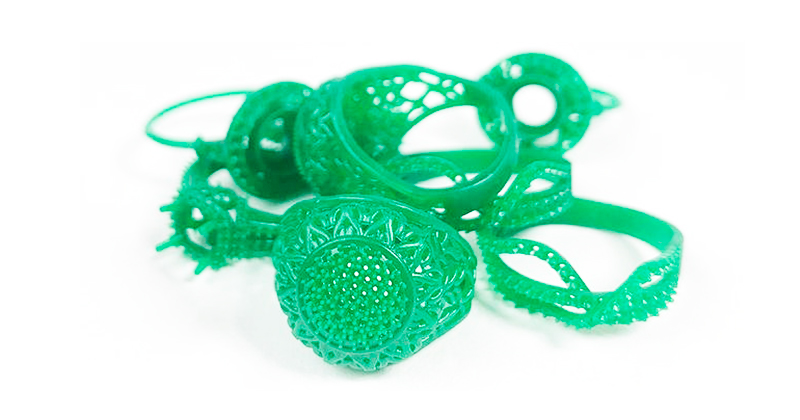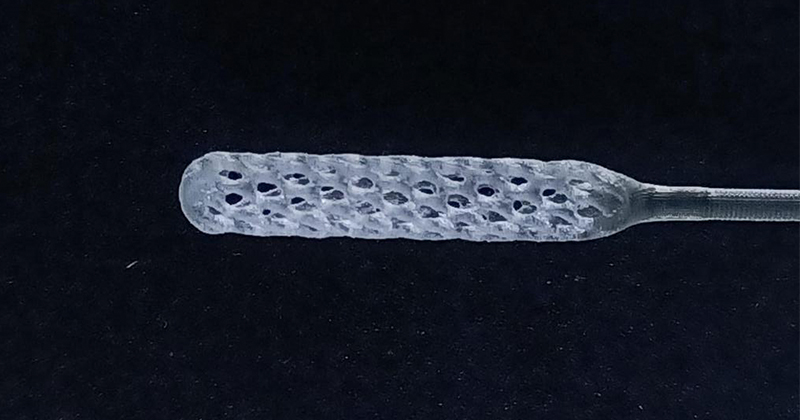As the world finds its course through the currents of COVID-19, new growth opportunities and challenges have surfaced. In this new series on “Emerging sectors: Hope or hype”, we dive deeper into areas with the most buzz to decide if they are just fads, or the next wave to catch.
When COVID-19 disrupted demand and supply chains, 3D printing machines pressed on to fill the gaps for essential items. Can on-demand printing boost your immunity against supply shocks too? Will this new form of manufacturing inject vitality into your business?
Modern mass production is synonymous with factories and machines that automatically churn out standardised goods at phenomenal speed.
In recent years, additive manufacturing, commonly referred to as 3D printing, has broken the mould of conventional manufacturing and reshaped the manufacturing scene.
Airbus is making aircraft components lighter and more fuel efficient. Doctors are using 3D models to plan surgeries and design tools. Adidas and Nike are producing lightweight, high-performance running shoes that would not have been possible to manufacture using conventional methods. In future, a shopping trip for clothes, shoes or a pair of glasses could mean getting a digital scan and creating a customised design for on-demand production.

What is additive manufacturing?
Additive manufacturing builds objects layer by layer based on a digital model. It uses a range of materials such as plastic, metals, ceramic or silica sand. Different technologies are employed to deposit, fuse and cure them from their powder or liquid state. Process wise, additive manufacturing is clearly distinguished from subtractive manufacturing, or production methods involving material removal.

Additive manufacturing is unlikely to replace conventional manufacturing, but it has unique benefits to earn a place in the manufacturing ecosystem. A big plus point is the immense flexibility it brings to your production process and outcome.
Given its wide appeal, the additive manufacturing industry is growing rapidly. According to the Wohler’s Report 2020, worldwide revenue from additive manufacturing has grown by an average of 27% since 2020. Furthermore, the Thyssenkrupp White Paper reports an expected growth of 24% in the global additive manufacturing market till 2023.
What’s the appeal of additive manufacturing?
Unlike conventional manufacturing, additive manufacturing works best for high-mix-low-volume production, or a high variety of goods in small quantities. It serves the market for made-to-order items, from customised medical devices to hard-to-find machinery parts.
The unique 3D printing technology has lifted design restrictions, offering greater flexibility and speed in product development. Engineers are seizing the opportunity to create shapes and objects previously not achievable, such as consolidating parts into a single component, or embedding multiple materials into the printed object. While it is difficult for moulds or machines to create items with complex geometric patterns or internal cavities, this is a breeze for the 3D printer.

With digital modelling, creating prototypes and adjusting designs become easy and fast. This not only shortens the product development cycle, but also makes it more responsive. When market conditions change, companies can switch out their product offerings quickly by prototyping new ones that might suit.
Another advantage of additive manufacturing is its portability. You can set up printers in remote areas or use it on-site, such as on ships, to bring production closer to demand. This in turn lowers logistic costs and lead time. In contrast, it is harder to adjust the supply chains of conventional manufacturing.
What are the implications on business costs? When you’re producing highly customised pieces in small quantities, there’s no need to cast moulds or cut materials out of whole pieces. This means fewer resources – and in turn, less waste and lower costs. While there’s still some infrastructure and equipment required for additive manufacturing, it dwarfs the complex machinery and factory floors of old.
In addition, with on-demand production, you can digitise your inventories to reduce inventory burden and reduce logistics costs. It also supports aftermarket needs, cutting down your dependence on original equipment manufacturers.
These benefits make additive manufacturing a boon for both consumers and businesses, with a deep impact on global supply chains. Can’t find what you want on the market? You can now have it designed and printed instead.

Same technology, different uses
Within ASEAN, Singapore has a 40% share of the additive manufacturing market. Today, more Singapore firms across various sectors are tapping the technology to make a material change. Want a slice of the action? Here’s a look at how local companies have done it.
Maritime components
If ships encounter faulty parts with no replacements on board, it could mean a long downtime and chalked-up losses. Enter 3D MetalForge, a Singapore additive manufacturer that uses 3D printing to get ships sailing again sooner.
One of its clients wanted to replace a ship’s defective impeller. The company created a digital file of the part and improved on its design by printing the whole impeller in one piece. The part passed all required testing and was delivered in just three weeks, instead of the six to ten-week wait for the component to be produced in the conventional way.
But aside from the maritime sector, just-in-time production using 3D printing could also open doors to serving other fast-paced sectors that rely on specialised parts, such as robotics and oil and gas.

Jewellery design and production
Additive manufacturing can also be a boon if customisation and evolving product lines are the mainstay of your business, or your clients’. Take ECS Singapore, which has been able to apply the technology for the benefit of its clients in jewellery design and production, where trends change quickly and designs are tailored to individual tastes.
In designing jewellery, moulds first need to be made for casting, but creating design prototypes the traditional and manual way can be time consuming and lead to errors. ECS’ solution is thus to 3D print moulds, a method that’s not only quicker, but also provides greater accuracy. The precision of 3D printing also allows for jewellery designs with finer details.

Healthcare devices
Healthcare is another field which presents growing opportunities for the use of additive manufacturing, due firstly to its specialised nature.
Consider dentistry, where additive manufacturing is already beginning to feel like a natural fit. Teehee Dental Works uses additive manufacturing to create custom-made dental appliances such as clear aligners, dentures and crowns. Another local company Structo develops 3D printers for the dental industry worldwide.
The healthcare industry can also face sudden changes, such as during the current pandemic, meaning it could be useful for you or your clients to be able to adapt without having to invest in new machines or production lines. For example, when COVID-19 strained local medical supplies, Teehee and Structo were able to switch quickly from manufacturing their usual products to producing nasal swabs, by leveraging 3D printing technology.
Another firm, medical simulator producer AuMed was also able to design and produce life-sized training manikins specially for COVID-19 swab collection training by working with Creatz3D, a Singapore-based 3D printing solutions provider.

Additive manufacturing: Still work-in-progress?
On the flip side, additive manufacturing has its limitations too.
For certain types of production, high-end industrial 3D printers and printing materials are required – and these can be costly. Be prepared to incur capital expenditure and invest in building up technical expertise within your company. The good news is, not all production requires such advanced equipment, so it’s possible to make incremental, modular investments and still reap the benefits of additive manufacturing.
The production time and cost per unit is higher when you print your products compared to mass-producing them in factories. Therefore, additive manufacturing is not suited for high-volume production of standardised items.
Hope or hype?
Despite its limitations, the benefits of additive manufacturing make it viable for customised, complex and high-mix-low-volume goods. Its growth potential is huge and will further increase as the technology advances. Whether in the business-to-consumer (B2C) or business-to-business (B2B) segments, additive manufacturing offers many opportunities to service markets in the region and around the world.
If you are keen to find out more about this industry, Enterprise Singapore and the National Additive Manufacturing Innovation Cluster have jointly put together a programme to help Singapore companies evaluate and adopt additive manufacturing technologies for their business.
Want to see your ideas materialise? Think of how additive manufacturing can reshape your business.
New to additive manufacturing? Here are some common industry standards you’ll likely encounter as you build your business.
- TR 87:2021: Safety of additive manufacturing facilities lays out the best practices for the 3D printing industry. This is a must for those new to the game.
- SS 666:2020 Qualification of parts printed by metal additive manufacturing helps you to qualify and certify printed metal parts and processes. Use it to achieve consistency in your products.
- TR 70:2019 Guidelines on the selection criteria for metal additive manufacturing processes helps you to match suitable processes to specific parts and purposes.

